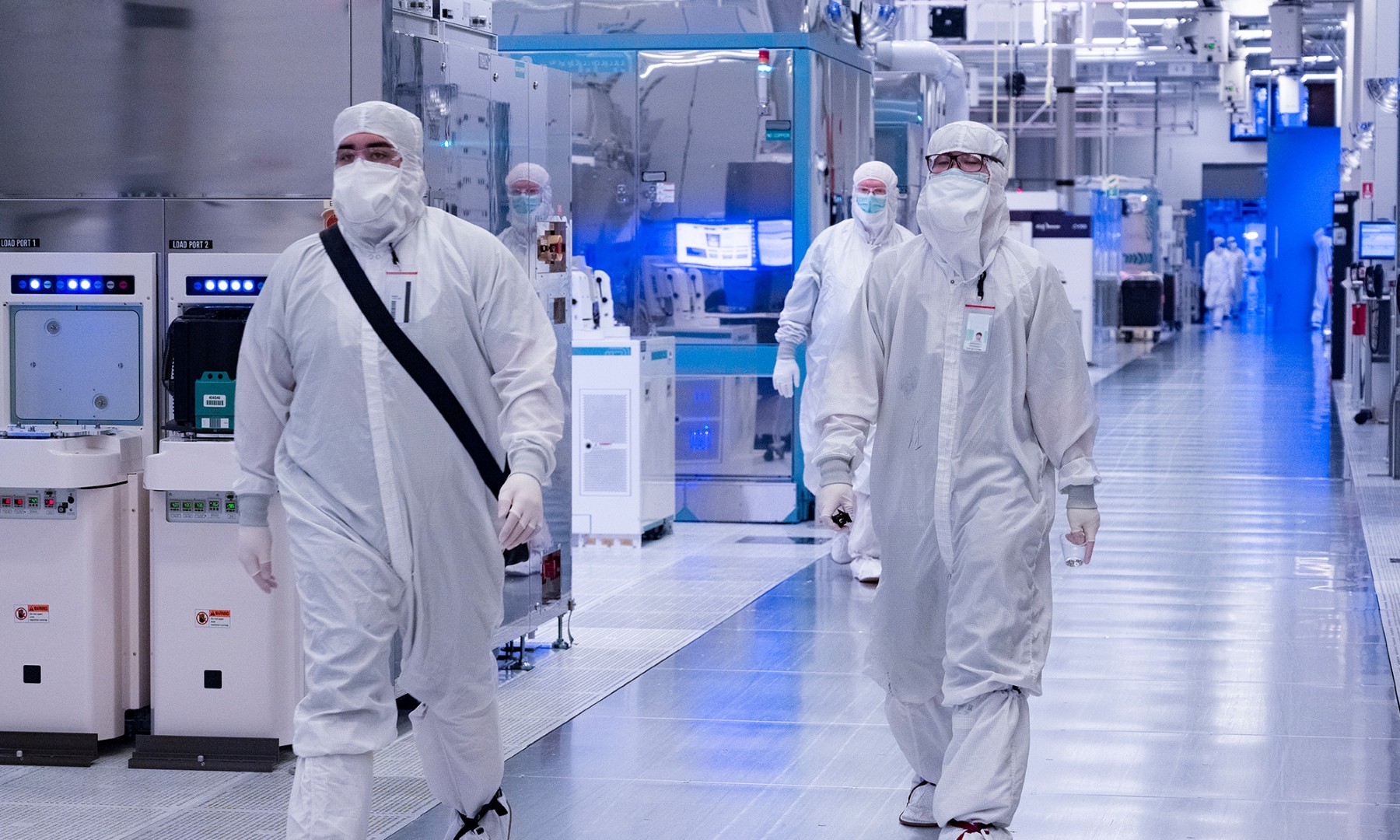Chip giant Intel (INTC 0.42%) is set to report its earnings results for the fourth and final quarter of 2015, as well as issue guidance for the first quarter of 2016, on Jan. 14. The company didn't change its full-year guidance during its November investor meeting and it didn't pre-announce (either positively or negatively), so I think it's pretty safe to say that Intel's results for the fourth quarter should be pretty much in-line with analyst estimates.
Those estimates, for reference, call for full-year revenue of $55.24 billion (down 1.1% year over year) and full-year earnings per share of $2.23 (down 3.46% year over year).
The key thing that I think investors should keep an eye out is on how the company guides for the first quarter of 2016 and for any revisions in the company's full-year 2016 expectations.
The bottom line on current fiscal 2016 expectations
At its November investor meeting, Intel said that it expects "mid-single digit" revenue growth, gross profit margins of 62% (give or take a "couple of points"), and capital spending of $10 billion ($8.5 billion for its core logic business and $1.5 billion for memory).
The company also said that it expects its operating expenses as a percent of revenue to come down by a "half a point." Note that this doesn't mean that Intel will be cutting its spending (in fact, I would expect it to increase), but the implication here is that revenue should grow faster than its operating expenses will.
Right now, analyst consensus is that Intel will ultimately rake in $58.32 billion in revenue next year, for growth of about 5.6%, and earnings per share of $2.37, representing nearly 6.3% growth.
Expect reiteration, but here are possible upsides/downsides
My expectation is that the end of 2015 played out as the company expected and that the company will issue forward guidance for the first quarter of 2016 that's consistent with the full-year guidance that the company issued in November.
In other words, I don't think there will be a major change in Intel's view of 2016 and, concordantly, don't believe that there will be a major change in Wall Street's expectations, either.
That being said, when Intel reports its results and issues its guidance on Jan. 14, the year itself will still be quite young and things could still wind up going better or worse than the company expects throughout the year.
Intel's current guidance is predicated on the following two major expectations:
- PC market is down slightly, but overall client computing group business sees revenues flat to up at a low single-digit revenue clip; operating profit up in the "low double-digits"; and
- Data center group revenue growth in the "mid-teens" with operating profit growth in the low double digits.
In my mind, the area that has the biggest potential to "surprise" is the company's client computing group (which mainly consists of PCs). Working in Intel's favor here are a number of factors.
First, 2015 was a rough year, so year-over-year comparisons for 2016 shouldn't be as tough. This is in contrast to the situation in 2015 in which Intel had relatively difficult compares thanks to the Windows XP end-of-life refresh cycle that boosted 2014 results rather significantly.
Another thing to point out is that Intel is ramping its new sixth-generation Core processors (i.e. "Skylake") into the market.
These new processors should allow Intel and its partners to continue on their journey to make thinner, lighter, and more tablet-like PCs in a bid to stave off cannibalization of PCs by tablets.
More important, though, is that these sixth-generation Core processors represent the first major platform refresh in Intel's desktop lineup in almost two years, a point highlighted by Intel's PC chief, Gregory Bryant, at a recent investor conference.
If desktop PC buyers (many of whom are corporate buyers) were holding off until Skylake, then there may be some pent-up demand that Intel can finally satisfy during 2016. We should get an idea of whether this phenomenon will actually play out or not following Intel's fourth quarter earnings call.
Next, we have Intel's data center group. This group did very well in 2014, handily beating out the company's stated long-term annual growth goal of 15%. However, in 2015, the company has indicated that it will fall short of that goal.
For 2016, I think Intel will hit its guidance (especially since the business is no longer dominated by enterprise server revenues and Intel is being more conservative about its view of the enterprise server market). That said, I would still listen closely for any clues that the company might either exceed or fall short of its targets here.
Not expecting much in the way of fireworks
All told, I'm expecting essentially an in-line report and guidance. As long as Intel can just meet the projections that it put forth late last year, I expect that Intel stock should ultimately march upward as investors become increasingly confident in the chipmaker's ability to deliver solid and steady long-term revenue and profit growth.






